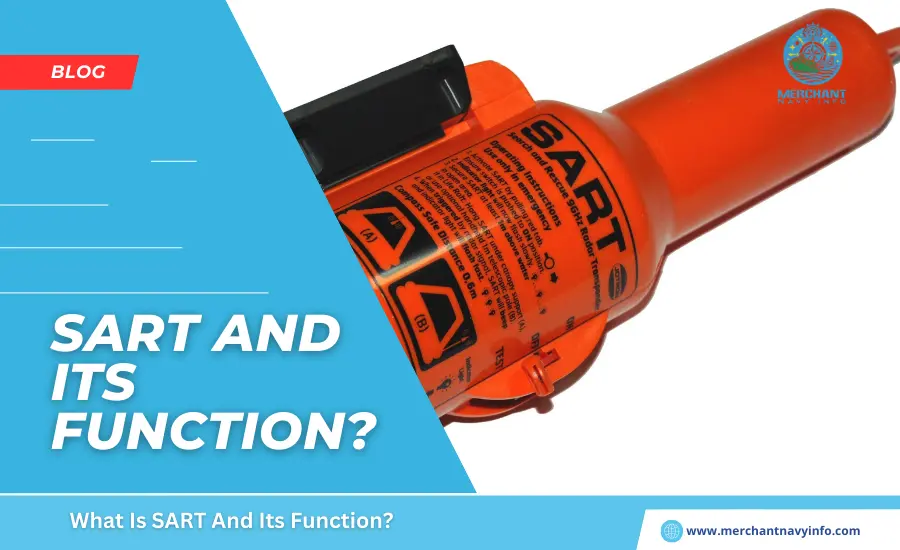
SART, in its full form (Search and Rescue Transponder), is a very important piece of equipment onboard a ship. It acts as a signal transmitter and is an important machine in maritime emergencies, as it helps to locate a ship if it goes off course.
The SART is made with waterproof components that protect against water damage. It is primarily battery-powered, so it can operate for long periods of time.
SARTs are used on ships, lifeboats, and life rafts. They are the most powerful support equipment in an unprecedented emergency and are designed to keep the ship afloat for long periods of time if it is submerged. The bright color of the SART allows for quick detection, and the transmitter and receiver combination allows it to send and receive radio signals.
The SART machines responded to search signals transmitted by X-band radar, typically at 9 GHz, and helped rescue multiple vehicles and ships. These signals are called homing signals. The response typically appears on the radar screen as a series of dots on the X-band radar, helping rescuers reach the ship in time.
As mentioned above, a SART is an electronic device that automatically responds to calls or inquiries from a marine radar. This improves the visibility of the person calling for help on the radar display (PPI). They operate in the 9 GHz band and only transmit during radar interrogation when switched on.
SART – General Features, Location and Functions
SARTs are made of fiber-reinforced plastic to withstand prolonged exposure to sunlight and extreme weather conditions. They float free from the survival craft. International orange-colored SARTs are attached to a mounting bracket on the vessel’s bulkhead above the bridge.
They operate in the 9 GHz frequency band (9.2-9.5 GHz) and generate a series of clips on the radar being interrogated (3 cm/X-band radar). They can be portable or permanently mounted in the survival vehicle.SARTs are manually activated and, therefore, only respond when queried.
When activated in an emergency, the SART responds to radar interrogations by transmitting a signal that produces 12 blips on the radar and changes to concentric circles as the distance between the two points decreases.
On a PPI, the distance between the points is 0.6 miles. This signal is much easier to detect than echoes from radar reflectors. The SART also has an audible or visual indication of proper operation and notifies survivors if it is detected by radar. It beeps every 12 seconds if the radar is not in view and every 2 seconds if it is interrogating it.
Transport Requirements
- Passenger ships – at least 02
- Cargo ships over 500 GT – at least 02
- Cargo ships over 300 GT – at least 01
- One for each survival craft
Battery Requirements
- Standby state, 96 hours of operation
- Operating state, 08 hours of operation
- Batteries must be replaced every 2 to 5 years
- Capable of operating at temperatures between -20°C and 55°C
SART Test Procedure
Self-Test (General)
- Switch SART to test mode.
- Keep the SART within sight of the radar antenna.
- Verify that the visual indicator lights are working.
- Make sure the buzzer sounds.
- Observe the radar display and also note the concentric circles on the PPI.
- Check the battery expiration date.
Self-Test (Standard)
- Remove the SART from the holder.
- Insert the probe into SART every 2 seconds. The lamp will flash, and the buzzer will sound.
- Observe concentric circles with an X-band radar.
In the event of accidental activation, turn off SART immediately. Broadcast DSC security alerts on VHF channel 70. Broadcast security messages from RT to all stations on VHF channel 16. This includes your ID and location and indicates that you want to clear the false alarm that was sent in error.
AIS-SART
The AIS-SART is a standalone radio used to locate a survival craft or vessel in distress by sending an updated position report using the standard Automatic Identification System Class A position report.
The AIS-SART’s location and time synchronization is done via an integrated GNSS receiver (e.g., GPS). The Global Maritime Distress and Safety System “GMDSS” installation includes one or more search and rescue locating devices. These devices are AIS-SART (AIS Search and Rescue Transmitter) or Radar SART (Search and Rescue Transponder).
The SART assists in rescue operations for stranded aircraft and ships in aviation and maritime accidents. Designed to withstand the harshest conditions and active use in high positions such as poles, it can cover a wide range of areas.
Speaking of altitude, her plane’s SART transponder has a range of 30-40 miles. This helps in studying vast spectrums and areas. The facts show that the SART is a marvel of ergonomics and critical equipment for deep-sea vessels.









